Tag: travel
Top 10 Summer Destinations in india
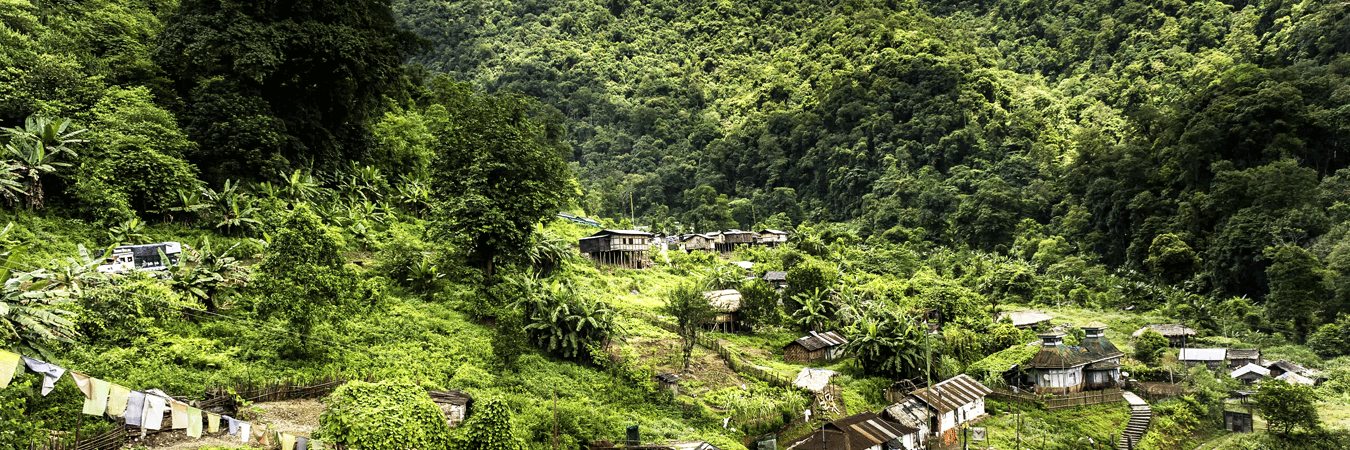
As a traveller, have you ever seen something so intricate, natural, and stunning that it literally swept you off your feet? Visualise a place, which is bestowed with exotic flora and fauna, majestic mountains, and sparkling rivers – we are talking about some stunning valleys of India, which will simply leave you awestruck. Let’s talk about these natural wonders of India, which are worth exploring for any ardent traveller.
Zanskar Valley, Ladakh
Zanskar valley is located in the south-west region of Leh at an altitude of 13,154 ft and spread over an area of 5,000 sq km. This valley is named after the Zanskar River, which flows down from the mountain and waters the rose bushes and other herbal plants in this valley. Nestled amidst snow-capped mountains of the Himalayan range, this is one of the most beautiful valleys in the world. The ravine provides captivating views of the surreal beauty of nature and attracts many tourists. You should know that it remains inaccessible for about 7 months of the year due to heavy snowfall. The Zanskar River freezes and turns into a captivating sheet of snow during winter, which is popularly called as the Chadar trek. A few tourists come here especially in winter to relish the opportunity of trekking on this challenging terrain. Besides that, many visitors come here to explore the ancient Buddhist monasteries. During summers, travellers enjoy white water rafting on the Zanskar River.
How to reach:
By Air: The nearest airport to Zanskar is at Leh. Leh is well connected to major cities like Jammu, Srinagar and Delhi with major airlines flying into Leh. Hire a taxi from the airport or you can go for shared taxis or buses to get to Zanskar Valley.
By Rail: The nearest rail head is Jammu. After getting off at the railway station, one can take a shared bus to Zanskar Valley via Kargil.
Where to stay:
You can stay in the Jammu and Kashmir Tourism Bungalow. Other options are three guesthouses and some campsites in Zanskar. Padum town, which is situated at a distance of 19 kms from Zanskar, has a three-star hotel.
Valley of Flowers, Uttarakhand
Nestled amidst the Garhwal hills of the Himalayan Mountain Range, the valley of flowers has been accredited as a World Heritage Site by UNESCO. It is one of the main attractions of the Chamoli region of Uttarakhand. This beautiful canyon is fittingly named as the Valley of Flower, as it is blessed with a fabulous assortment of gorgeous flowers, which fill up the valley and create an enthralling panorama. In fact, there are some rare varieties of flowers here, such as: the blue Himalayan poppy, Himalayan bellflower, Morina longifolia, Himalayan maple, and brahmakamal – interestingly, these flowers are found only on the higher stretches of the Himalayas. Besides regular tourists, this valley is hugely popular among explorers, botanists and mountaineers, who come here either to study the rare flowers or to enjoy trekking. It is also home to some endangered species of animals such as snow leopard, red fox, musk deer, brown bear, and blue sheep. The best time to visit this valley is between mid-April and June, as it remains closed for 7 months in a year due to heavy snowfall.
How to reach:
By Air: The Jolly Grant Airport is the nearest Airport to Valley of Flowers. You can book a cab to reach Govind Ghat. From there onwards, you have to commence trek of 16 kms to reach the Valley of Flowers.
By Rail: The nearest railway station to Valley of flowers is Rishikesh. You can reach Govind Ghat by bus or cab and then you have to commence trek of 16 kms to reach Valley of Flowers.
Where to stay:
No one is allowed to stay in the Valley of Flower region. So, you can stay at Ghangaria or Govindghat, where you will find GMVN Tourist Rest House and Forest Rest House. Private Lodge and Hotels are also available in these two places.
Kashmir Valley, Kashmir
Snuggled between the Pir Panjal and the Karakoram Range of mountains, the majestic Kashmir Valley is blessed with an unprecedented charming landscape. Over the years, this gorgeous valley has not only captured the imagination of the travellers around the world, but also inspired many artists, poets, and filmmakers. With snow-capped mountains, verdant meadows, cascading waterfalls and beautiful groves of pine trees – this is the only place, where you would feel that the blue sky actually reflects the exquisiteness of the lakes, which are complemented by the beds of blooming flowers.
How to reach:
By Air: Srinagar airport is approximately 14 km from the city. There are daily flights to Srinagar, operated from Delhi, Mumbai and Jammu.
By Rail: Nearest rail head for Srinagar is Jammu about 305 km. Trains from Delhi, Calcutta, Pune, Mumbai and other cities arrive at the Jammu Tawi station daily.
Where to stay: There are many options to stay in Kashmir Valley. One can stay in houseboats (known as Shikara locally) in Srinagar. Most of these houseboats anchor along the banks of Dal Lake and Nagin Lake only. Just like hotels, the houseboats of Kashmir are also categorised. There are Deluxe, A-class, B-class, C-class and D-class houseboats in Srinagar. Besides that, there are many hotels in Srinagar, located around the Dal Lake.
Sutlej Valley, Punjab
The Sutlej Valley is named after the famous Sutlej River, which is the longest of the five rivers of Punjab. This beautiful valley is flanked by some striking snow-capped mountains and verdant hills. It is also home to one of the largest Bird Sanctuaries in India, named as the Harike Bird Sanctuary, which has many rare species of birds such as Yellow Clowned Woodpecker, Water Cock and Tufted Duck among others. This valley is perfect for nature walk. The entire region around this valley is also beautiful and one can take a walk through mustard fields and apple orchards.
How to reach:
By Air: Amritsar Airport is the closest airport situated at a distance of 68 km. Hire a taxi or bus from the airport to reach the Harike Wildlife Sanctuary within one and half hours.
By Rail: The nearest railway station is Tarn Taran railway station situated at 33 km south to the sanctuary.
Where to stay: There are many hotels and rest-houses around 10 km from the Harike Wildlife Sanctuary.
Kangra Valley, Himachal Pradesh
Besides its incredible natural beauty, the Kangra Valley is a worldwide popular destination for the Kangra Fort and Masroor Rock cut temple, which is declared as a World Heritage site by UNESCO and popularly known as ‘The Himalayan Mountains.’ The beauty of this valley lies in its fascinating layers of pine trees and orchards. There are many rivulets in this valley, which are replenished by the glaciers and help in sustaining the incredible ecosystem of this place. The best time to visit this valley is in the month of April. To enjoy the breathtaking views of this valley, one can board the Kangra Valley Railway and soak up the beauty of this region.
How to reach:
By Air: The nearest airport at Gaggal in Kangra is at a distance of 7 km, this is the nearest airport. There are daily flights from Delhi to this place.
By Rail: The nearest broad gauge railhead is Pathankot, 70 km away.Pathankot is on Delhi Jammu Railway line and there are plenty of trains to choose from at different timings.
Where to stay:
There are many hotels and resorts in Dharamshala, 31 km away.
Dzukou Valley, Nagaland
Located on the border of Nagaland and Manipur, the Dzukou valley is one of the most picturesque valleys in the northeast region of India and attract trekkers from all over the world. This amazing valley turns into a carpet of wild flowers in spring, which are watered by two streams of the Japfu and the Dzukou rivers. Besides flowers, this entire valley is flanked by bamboo trees, which create a kind of boundary around these flowerbeds – and these elements blend together to create some remarkable sights. Nature lovers, botanist, and explorers frequent this place – as there is something for everyone and possibly that is why they call it the “Valley of Flowers of the North East.”
How to reach:
By Air: The nearest airport is Dimapur, 91 km. Dimapur gets flights from Delhi, Mumbai and Bengaluru.
By Rail: The nearest railhead is Dimapur, 91 km. You can book a cab or board the NST (Nagaland State Transport) bus from Dimapur to reach here.
Where to stay: There are many hotels and resorts in Dimapur. But, there is no private facility in the valley, so you have to stay at trekker’s hut.
Ketti Valley, Tamil Nadu
One of the most fascinating facts about the Ketti Valley is that it is the second largest gorge in the world. Nestled amidst the blue Nilgiri Mountains, this gorgeous valley is blessed with a variety of flora and fauna. One can enjoy many activities in this natural paradise such as hiking, trekking, and bird watching. This valley is flanked by beautiful hills, which cover the area from Coonoor to Ooty in Tamil Nadu. You can also take the toy train from Ooty, which runs through this valley, to savour its awe-inspiring beauty. Other main attractions of this valley are: the Shiva Lingam temple, tea plantations and some waterfalls in the area.
How to reach:
By Air: The nearest airport is Peelamedu Airport, 48 km away. You can book a cab or take a bus from there to reach the valley.
By Rail: Ketti has a railway station, which gets trains from the major cities of India.
Where to stay: There are many hotels and resorts in Ketti.
Dibang Valley, Arunachal Pradesh
Dibang Valley is more popular for its wildlife than its overall natural beauty. It is named after the Dibang River, which flows through this valley in Arunachal Pradesh. Another main attraction of this valley is that it is situated near the Indo-China border and divided into two sections. While its upper half belongs to some rare and endangered animals like Gongshan and Mismi Takin, the second half is home to a wide variety of birds. This region is complemented by undulated mountains, waterfalls, and lakes, which contribute to making it a natural paradise.
How to reach:
By Air: The nearest Domestic Airport is Chabua Airport, Dibrugarh, 192 km, and it is well connected to many major cities like New Delhi, Mumbai, Chennai, Kolkata, Bangalore, Ahmedabad, Dimapur and Hyderabad.
By Rail: The nearest Railway Station is Murkeongselek Railway Station from Anini located at a distance of 323 Kms from the district headquarters.
Where to stay: There are some medium to budget accommodations available near the Dibang Valley such as: Circuit House, Minu Hotel, Forest Rest House and Lhasa Hotel among others.
Chambal Valley, Madhya Pradesh
A few decades ago, the Chambal Valley was considered as one of the most notorious places in India, which were ruled by some dacoits. Things have completely changed over the years and now people frequent this valley to savour its scenic beauty. It is named after the Chambal River, which flows through this valley. One of the most fascinating aspects of this valley is that it is surrounded by verdant mountains as compared to the valleys, found in the Himalayan region, which are flanked by the snow-capped mountains. The lush green forests of this valley are home to a variety of flora and fauna. Other main attractions of this place are some prehistoric sites in the form of temples, which are sprinkled across the valley and offer interesting insights about the history of India.
How to reach:
By Air: The nearest airport is in Agra, 70 kms. You can book a taxi or take a bus ride to reach here.
By Rail: Agra is the nearest rail head.
Where to stay: There are many accommodation options available near the Chambal Valley.
Silent Valley, Kerala
Located in the Nilgiri Hills of Kerala, the Silent Valley is home to many endangered animals and birds. This verdant valley is also blessed with some rare plants, which are found in its evergreen forests. In fact, there is a National Park in this valley, which has been specifically created to protect its rare flora and fauna. There are various lakes and hillocks in this valley, which contribute in supporting its fragile ecosystem.
How to reach:
By Air: The nearest airport is Coimbatore, 68 Km. You can book a taxi or take a bus ride to reach here.
By Rail: The nearest railhead is also Coimbatore.
Where to stay: There are many accommodation options available near the Silent Valley.
Planning to travel to India? Check out some Amazing Options!
Top 10 Train Journeys in india

Be it natural and geographical diversity or a population of more than a billion people – India is a land of too much and too many. A whopping surplus of many things characterizes the magnanimity of India as a nation, which is always ready to embrace an inevitable change. It applies to everything in India and same is the case with Indian Railways, which has 63,028 km of tracks, covering the length and breadth of the country, with over 1.376 million employees to take care of 14,300 trains, which operate on a daily basis.
Indian Railways is the lifeline of this country. Well, to run such an extensive network of trains, India is one of the few countries, which creates its own state budget especially for the Railways. These trains not only play the most important role in ensuring the smooth functioning of the country but also touch the heart of every Indian, in one way or another. In fact, they have also inspired innumerable authors and filmmakers. Obviously, anyone would agree that there is no better way to see India than taking a train ride to explore its mesmerizing landscapes, cultures and many other things. A rail journey across any part of India can be exhilarating, invigorating, and truly worthwhile. Whether you are a train-spotting enthusiast, ardent traveller or just another explorer, there are a few train rides in India, you must undertake to savour an experience of a lifetime.
Nilgiri Mountain Railway (Mettupalayam – Udhagamandalam)
Majestically chugging up the Blue Mountains or Nilgiri hills, the Nilgiri Mountain Railway has been running for over 100 years and meanders its way through rocky terrains, tunnels, bridges and verdant tea plantations. This steam locomotive takes you to Ooty by using a ‘rack and pinion technology.’ There is an old charm to it, which is related to its chuffing sound – a great reminder of the British Raj legacy. Its route has been further extended over the years from Coonoor to Udhagamandalam. Many people take up this trip only to enjoy the majestic views, which are the hallmarks of this journey.
The Konkan Railway (Ratnagiri-Madgaon-Honnavar-Mangalore)
Spanning over 738 kilometres across the states of Maharashtra, Goa and Karnataka, The Konkan Railway actually connects the western coast of India with the rest of the country. This route passes through some of the most stunning and scenic places in this part of India. Complemented by rivers, verdant forests, tunnels, waterfalls, amazing curves and tremendous natural beauty, this is one of the most renowned and sought-after train experiences in the world. There is so much to experience along the way for a traveller on this train, as this part of India is adorned with an abundance of natural beauty and undulating sceneries to astound you.
Matheran Hill Railway (Neral-Matheran)
Matheran town is one of the few hill stations in India, which still has that old world charm. The most beloved property of this hill station is Matheran Hill Railway, a heritage railway, which runs on a narrow gauge of 2 ft. This railway covers only a distance of around 21 km, but there is so much to experience on the way – from the large swathes of forests to verdant hillocks and mesmerizing waterfalls.
The Snow Sojourn (Qazigund-Srinagar-Baramulla)
Still at a construction stage, this project is a part of the Kashmir Railway and considered as the most ambitious and expensive project after the Konkan Railway Route. This route connects Jammu to Srinagar valley, which is further extended to Baramullah. On the way, this train offers some overwhelming panorama of natural beauty. Presently, an unreserved DEMU train operates on this tour. Many people board this train, especially during winters, when the snowfall alters the views and further augments the beauty of this place. Once the project will be completed, then it would turn out as a refreshing ride through the beautiful Kashmir valley, overlooking snow-capped peaks and surrounded by Chinar trees.
The Kalka Shimla Himalayan Railway
This is the only mountain railway in India, which is used by regular commuters. The heritage railway runs between Kalka and Shimla track, which was built in 1903 by the British and passes through 864 bridges and 102 tunnels. This route is also registered in the Guinness Book of World Records for the steepest rise in altitude around 96 kilometres. Chugging along nicely amidst the Shivalik Hills, this train voyage offers some remarkable views on both sides of the track, which is built over viaducts, resembling the typical roman architecture. The entire backdrop is dotted with the pine, oak, and maple trees, which create some striking sceneries during this journey.
Dooars Voyage (Siliguri – New Mal – Hasimara –Alipurduar)
Recently converted from a small gauge to a broad gauge, this route passes through some notable wildlife sanctuaries, which are a treasure of flora and fauna. One can find oneself in the lap of nature while travelling through this route, which is brimming with forests and wildlife, while overlooking the gushing streams trotting down from the enthralling hills of Bhutan and Sikkim. Tea plantations and hills flank the entire landscape. This train route passes through various streams along with the Mahananda Wildlife Sanctuary, Jaldapara Wildlife Sanctuary, Chapramari Forest, and Buxa Tiger Reserve.
Arakku Valley Railway (Vizag – Arakku)
This is a must-take journey for the nature lovers. With coffee plantations and thick forests on both sides, this route passes through some of the most beautiful landscapes of India. Earlier this route was used only for the transportation of iron ore from Chattisgarh to Vishakapatnam. Besides its tremendous natural beauty, Araku Valley is also known for its caves, waterfalls and tribes, which reside deep in the forests. This is one of the oldest hill railways of India, which has a broad gauge from the beginning.
The Travancore Railway (Kollam-Punalur-Sengottai)
 The erstwhile Maharaja of Travancore flagged off the Travacore Railway for the first time in 1907. Regally complemented by the awe-inspiring Cardamom Hills on the both sides, this train journey is all about an overabundance of marvellous landscapes, which are present in the form of lush-green forests and some architectural marvels. Moreover, this route is famous for a 13-arched bridge, which was elegantly built by the engineers on this tough terrain. The entire route was converted into a wide gauge in 2013 and now it is the fastest railway link that connects Trivandrum to Chennai.
The erstwhile Maharaja of Travancore flagged off the Travacore Railway for the first time in 1907. Regally complemented by the awe-inspiring Cardamom Hills on the both sides, this train journey is all about an overabundance of marvellous landscapes, which are present in the form of lush-green forests and some architectural marvels. Moreover, this route is famous for a 13-arched bridge, which was elegantly built by the engineers on this tough terrain. The entire route was converted into a wide gauge in 2013 and now it is the fastest railway link that connects Trivandrum to Chennai.
Aravalli Adventure (Himmatnagar – Udaipur/Mavli – Marwar)
This train journey, which starts from Ahmedabad and ends in Marwar takes you deep into the heart of the Aravalli Mountains Range. On this route, one can enjoy some majestic views of ancient folded mountains, which are comprised of some steep rocky ridges – created by the process of consistent erosion over the years. Passing through the interiors of Rajasthan, you become familiar with the grand history and culture of this royal state, which is also known for its warm hospitality.
Kangra Valley Railway
Chugging along through beautiful passes, valleys and rivers, the Kangra Valley Railway is part of the sub-Himalayan line in Himachal Pradesh. This route begins from Patahnkot in Punjab and ends in Jogindernagar in Himachal Pradesh, while covering around 164 kms. However, this train is one of the slowest in India; it gives you a great opportunity to savour the scenic wonders of the Kangra Valley, overlooking the snow-capped mountains of the Dhauladhar Range.
Top 5 Motorcycle Rides in India
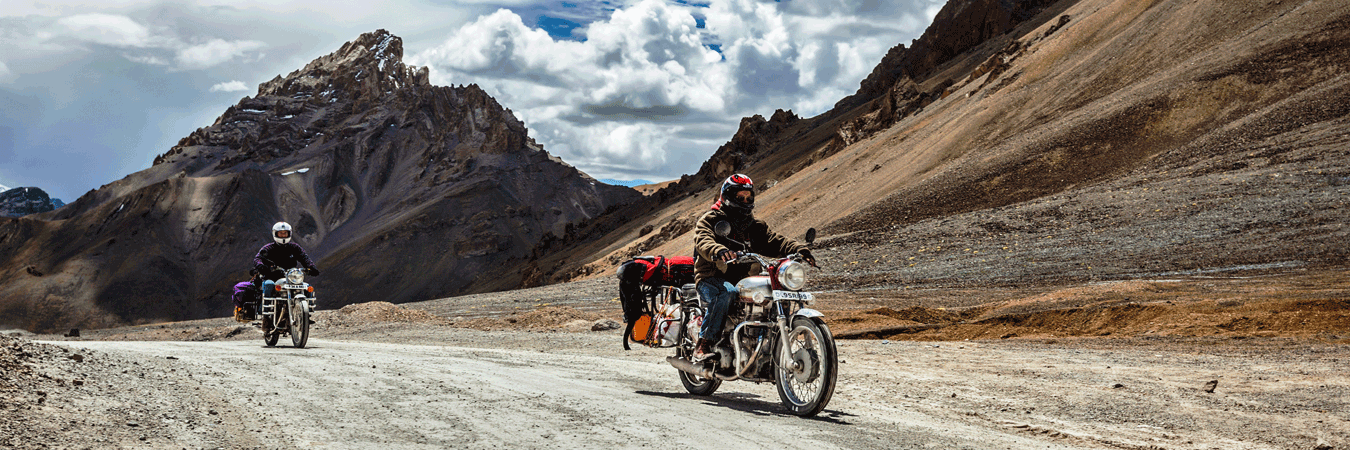
Exhilarating, mesmerizing, heartening – well, all these adjectives are usually associated with road trips. Now add biking into them and you would struggle to find enough adjectives to describe the feeling or phenomenon, which is associated with it. Perceptibly, it transcends all the limits of joy and excitement – biking is a journey of self-exploration and every rider would agree on that. With varied terrains, climates and awe-inspiring sceneries, India has all the attributes, which make it a heaven for bikers. There is something special in each part of India, waiting to be explored and always inspires the riders.
A rider not only experiences the unfathomed beauty of nature but also savours the best in adventure and this is the reason why India is considered as a perfect destination for riders. There are many motorcycle rides in India, which are full of surprises and challenge the skills and patience of every rider. The best thing about India is that one can embark upon a motorcycle trip in every season, across the various parts of this incredible country. So, let’s talk about some awesome motorcycle rides of India, which are worth exploring for every biker:
Leh-Ladakh and Kashmir
Undoubtedly, this is one of the most-celebrated and favourite motorcycle rides, not only in India, but also in the world, which has become synonymous with chilly mountain air, beautiful monasteries, enormous natural beauty and above all the sheer adrenaline rush. Talk to anyone, who has attempted it and you are bound to hear some incredible tales. This ride is all about some of the most stunning stretches in India – from snow-capped mountains and crystal-clear rivers, verdant valleys and sleepy towns, this ride is a must-have experience for any biker as each twist and turn on the road would unleash boundless natural splendours. The whole experience will stay etched in your memory – forever. Exquisiteness not only demands our reverence but also comes with a hefty price tag and that’s the case with this ride too, as it is the most difficult ride to attempt in India. You need at least 20 days to complete this route, which will take you through some marvellous valleys in Manali to the astonishing peaks in Leh. Usually, riders attempt this route by joining motorcycle groups, which help them conquer this difficult terrain as a team. This route has high mountain passes, including the highest motorable road in the world – Khardung La. A rider also gets the opportunity to explore the rich and serene Buddhist culture in this part of India. Some of the highlights of this trip are its wonderful destinations like: Nubra Valley, alpine lakes like Pangong Tso, Zanskar valley, and various Buddhist monasteries like Lamayuru, Alchi and Hemis.
Best Riding Season: April to August
Mumbai to Goa
An ideal road for high-speed bikes, The NH17 is one of the smoothest highways in the country, which connects Mumbai to Goa. It is one of the most picturesque and a different kind of biking ride in India, as compared to the high altitude one – mentioned above. Interestingly, on this route, you would get the feeling of riding through seemingly foreign roads, which will be devoid of any cumbersome traffic and roadside distractions. The ambience is dotted with some pristine coastlines and mesmerizing landscapes, a rider is bound to explore and experience so much on this route. This highway offers some overwhelming sights of the Vashisti River, marshlands and the virgin beaches of Ganpatipule. Other attractions of this highway are Malvan village and Sindhudurg fort, which was built by the great Shivaji.
Best Riding Season: November to February
North- East India
Snow-clad mountains, deep gorges and valleys, verdant hills, lush green tea plantations and widespread rice paddies, the North-Eastern region of India is blessed with alluring natural beauty, which is complemented by its fascinating landscape. However, at the same time, its meandering roads offer challenging conditions to the riders. It would require at least 25 days to complete this biking route, which will take you through the tea estates of Assam, Kaziranga National Park, Tawang Monastery of Arunachal Pradesh, Tribal Nagaland, and the abode of the clouds – Meghalaya. This region of India is known for a unique culture, ancient Buddhist Monasteries and highest waterfalls in the country. Besides offering an awe-inspiring experience, this route is also about a spiritual journey that sets you on the path of self-discovery and serenity. In some part of North East, the road network is not in a good condition, but as a biker, you would get the opportunity to ride through narrow bridges, river beds and gorgeous mountain passes to relish a once in a lifetime experience. This trip requires a lot of preparation and you can easily attempt it with a group.
Best Riding Season: March to September
Valparai and the Vazhachal Forest
Though monsoon season unleashes the remarkable natural beauty of India, it is not considered as the best season for riders, as many places get inundated with water and create difficult conditions for riding. Well, Valparai and the Vazhachal Forest biking ride offer the best monsoon ride in India. This is a connecting route between Pollachi in Tamil Nadu and Chalakudy in Kerala, and the roads are dotted with evergreen tropical rainforests. This region receives substantial rain as compared to nearby parts, but you would not see much water on the road. Well, the water of this region can be seen in stunning waterfalls and exquisitely built reservoirs. In fact, this area is also a part of the Vazhachal forest reserve, so one can also enjoy some amazing wildlife views. The most outstanding aspect of this route is well-maintained roads, which are complemented by the emerald green forests.
Best Riding Season: All year around
Jaipur to Ranthambore
This biking ride allows you to savour a biking experience on a totally different terrain, devoid of immense greenery, mountains and beaches. This ride is also about some challenging roads and harsh conditions, but with some preparation, one can explore the majestic destinations of Rajasthan on the bike. Starting out from Jaipur, you can visit many destinations along the way, including Bikaner, Jaisalmer, Jodhpur, and Udaipur. In fact, this ride also presents a unique opportunity for the riders to cruise through the Great Thar Desert. Besides experiencing the rich culture of Rajasthan, you would enjoy the local cuisine and wonderful hospitality of the people of the state. The entire landscape is dominated by the brown and green hues and you would find many enthralling palaces and havelis on this ride, which are the true testimony of the grand Rajputana architecture.
In Rajasthan January to March? Must-Visit Festivals For You
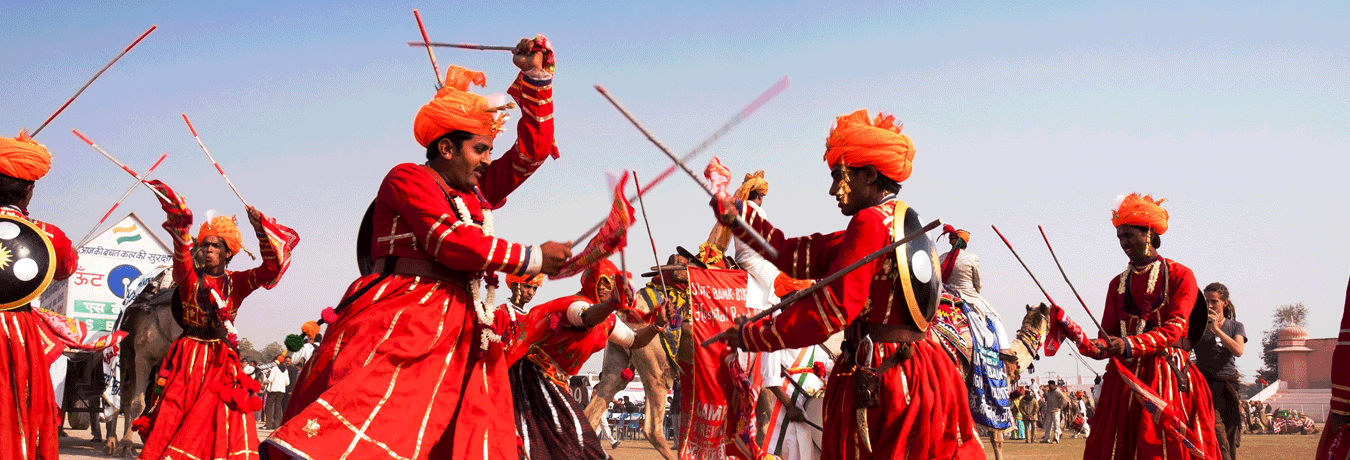
Royalty and glory – these two words sum up the essence of Rajasthan. Though this royal state of India has embraced the modernity to trudge along well with the evolving times, its roots are steeped in grand history, art, culture and architecture. Besides the majestic forts, vast desert and modest people, Rajasthan is also known for its various fairs and festivals, which showcase the colourful and vibrant culture of Rajasthan. There isn’t a better way to enjoy the hospitality and warmth of the people of Rajasthan than by attending their fairs and festivals. Each and every colour of joy and fervour can be experienced during these festivals, which define the very spirit of Rajasthan. If you are planning a trip to Rajasthan, it is better to keep these fairs and festivals in mind, which can make it a memorable experience for you. Let us talk about the festivals, which are organized during the months of January, February and March in Rajasthan.
Kumbhalgarh Festival
Organized by the Department of Rajasthan Tourism, Kumbhalgarh festival is a great initiative to promote the art and culture of the region. This is a must-attend festival if you like to enjoy the live shows of some of the India’s finest classical artists, musicians and dancers performing against the backdrop of the majestic Kumbhalgarh Fort. While adults can enjoy the captivating performances, children can play many games in the vicinity. Other attractions include a turban tying competition and a heritage walk. This festival is named after its creator Maharana Kumbha, who was a connoisseur and promoter of the Indian martial and fine arts, and architecture. This festival also provides a great platform to local artists, who can showcase their talent to a wider audience. This festival is divided into two parts – day time and evening time activities. Folk dances are performed during the day time, while evening belongs to the light and sound shows, which enhance the overall beauty of the fort to a great extent.
When: January 28-30 every year
Where: Kumbhalgarh Fort, near Udaipur
Jaisalmer Desert Festival
The Jaisalmer Desert festival is a well-devised and a fruit bearing effort of the Department of Rajasthan Tourism. This three-day event has emerged as one of the major attractions for the foreign travellers to Rajasthan. In this event, you get the opportunity to understand and experience the various exotic facets of the Rajasthani culture and its people. Encircled by the colossal swathe of golden sand, this festival is organized against the backdrop of the Jaisalmer Fort, which creates a fascinating panorama, oozing with beauty and grandeur. This festival provides a soul-stirring experience to the visitors, as they get familiar with the various interesting facets of the local culture. Besides folk dance performances, other main attractions of this festival are: camel races, puppet shows, polo matches, men with long moustaches, and turban tying competitions among other.
When: 20 -22 February 2016.
Where: Jaisalmer Fort, Jaisalmer
Shekhwati festival
Dotted by the undulating hills of the Aravali mountains range – the Shekhawati province of Rajasthan holds a great value in the history and culture of Rajasthan. This is the reason why it is also called the world’s largest open air art gallery. Located about 125 kms from Jaipur, Shekhawti region is hugely famous for the annual Shekhawati Festival, which is considered as one of the most important events in Rajasthan for promoting rural tourism. This mega event is jointly organized by the Rajasthan Tourism and the Morarka Foundation. In fact, other district administrations of Sikar, Jhunjhunu and Churu also help in organizing this event. Some of the main attractions of this festival are: exhibitions of arts and crafts, cattle fair and cultural performances among others.
When: January 12-14 February 2016
Where: Nawalgarh, Shekhwati
World Sufi Spirit Festival Jodhpur
Sufism is based on the philosophy of personal enlightenment and salvation. This message is eulogized through various forms of expressions including, the mystical poetry, music and dance, which transcend beyond the boundaries of religion and rituals. The World Sufi Spirit Festival Jodhpur brings together renowned artists from India and the world to create three days of magic, full of music and poetry. These artists perform on a stage, which is erected inside the incredible Mehrangarh fort to make it a truly memorable experience for you.
When: 26-28 February 2016.
Where: Mehrangarh Fort, Jodhpur
World Living Heritage Festival
The World Living Heritage Festival is organised by the Maharana of Mewar Charitable Foundation (MMCF), Udaipur in association with UNESCO India Office, New Delhi. This festival is part of the initiatives taken to preserve the incredible heritage of erstwhile Mewar. A comprehensive plan is developed to fulfil this responsibility by ensuring the proper maintenance and care of all the heritage buildings in Udaipur and also by promoting the local culture through different platforms. This festival showcases the best of Mewar heritage and culture to the world in order to create interest and curiosity among the visitors. The main attractions of this festival are: heritage exhibition, music concert, conference, and workshops.
When: 19-23 March, 2016
Where: The City Palace, Udaipur
Jaipur Elephant Festival
Elephants have been remained an important part of the Indian royalty because of their value in religious events, marriage ceremonies, and processions. During olden days, these massive animals were an important part of the royal armoury in a battlefield. This festival pays homage to elephants and it is organised on the full moon day of the Phalgun Purnima, a day before holi, the Indian festival of colour, which is celebrated all over India. A majestic spectacle is created in this festival. Elephants are nicely clothed and adorned with velvets rugs, parasols and jewellery including anklets and bells. One can see all sorts of intricate and traditional Indian motifs on the bodies of these elephants. The festival kicks off with an amazing procession of the elephants, which are painted with different colours and adorned with ornaments and embroidered clothes. The main attraction of this festival is Elephant polo and the tug-of-war between the elephants. Notable musicians and dancers also perform in this event.
When: 22 March, 2016
Where: Jaipur Polo Ground, Jaipur
Godwar Festival
This festival is organised by the District Administration of Pali and the Department of Tourism Rajasthan to promote the culture of the region and to attract tourists. This festival showcases the sparkling traditions and culture of Rajasthan through various dance and music performances. Various notable singers and dancers participate in this festival which is organized for three days in the city of Ranakpur, which is also popular for its rural settlement and remarkable Jain Temples. Other main attractions of this festival are: bullock cart rides, horse race, and turban tying competition among others.
When: 21-22 March, 2016
Where: Mana Hotels, Ranakpur, Rajasthan.
Jodhpur Flamenco and Gypsy Festival
The Jodhpur Flamenco and Gypsy festival is all about celebrating the magic of music and nuance of gypsy culture. Interestingly, the Gypsy culture of India was originated in Rajasthan. It is a three-day event, where world-renowned musicians come together on a single stage to play together in the historically significant Mehrangarh Fort. New and progressive music is played by a diverse group of performers to showcase and celebrate the various aspects of Gypsy tradition. This festival is a must-visit event for those who want to experience the best of progressive music.
When: 18-20 March, 2016
Where: Mehrangarh Fort, Jodhpur





 +1-(765)-586-1210
+1-(765)-586-1210 +44-2030-2689-44
+44-2030-2689-44 +91 124 4361906
+91 124 4361906














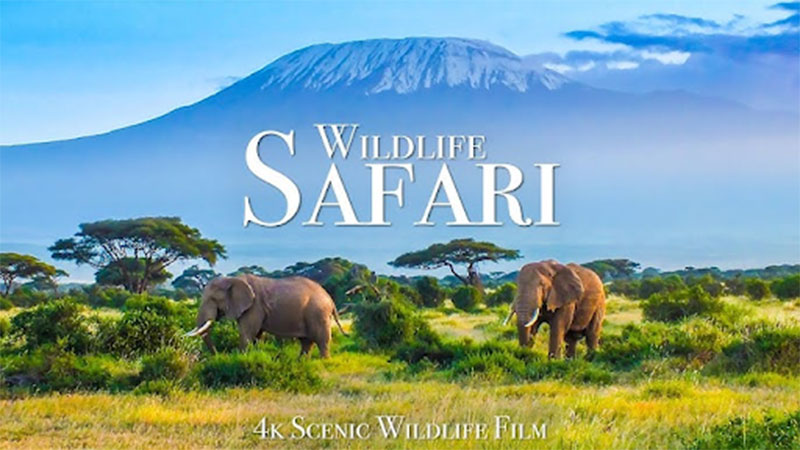

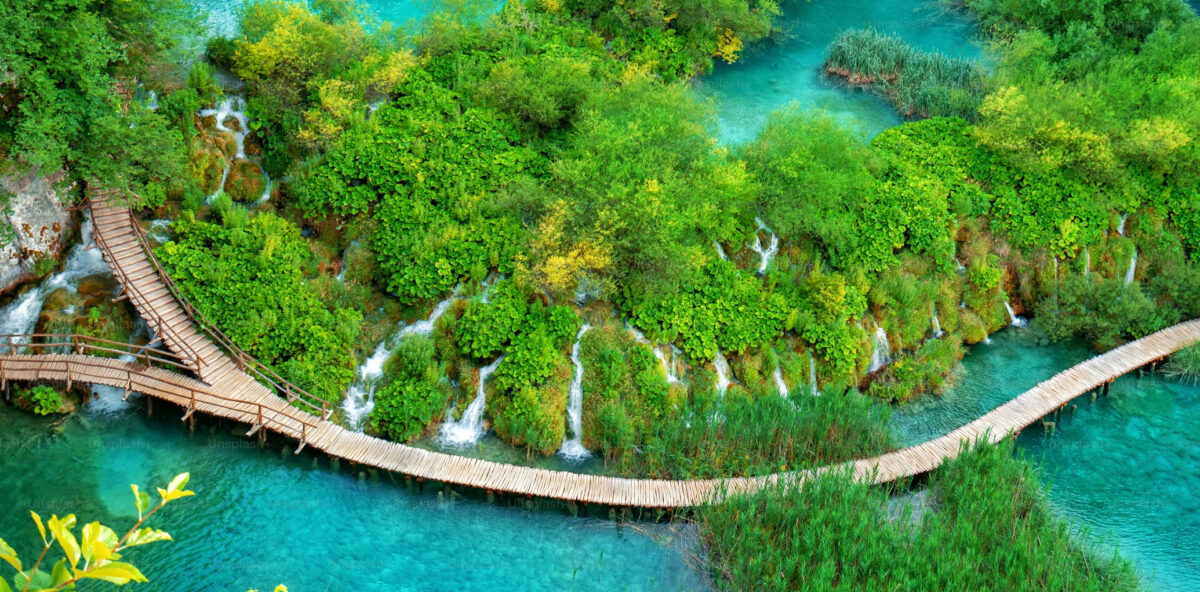


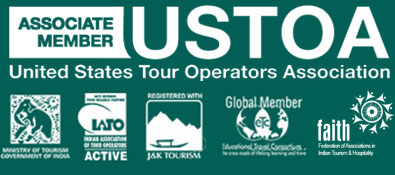


 +1-(765)-586-1210
+1-(765)-586-1210 +44-2030-2689-44
+44-2030-2689-44

